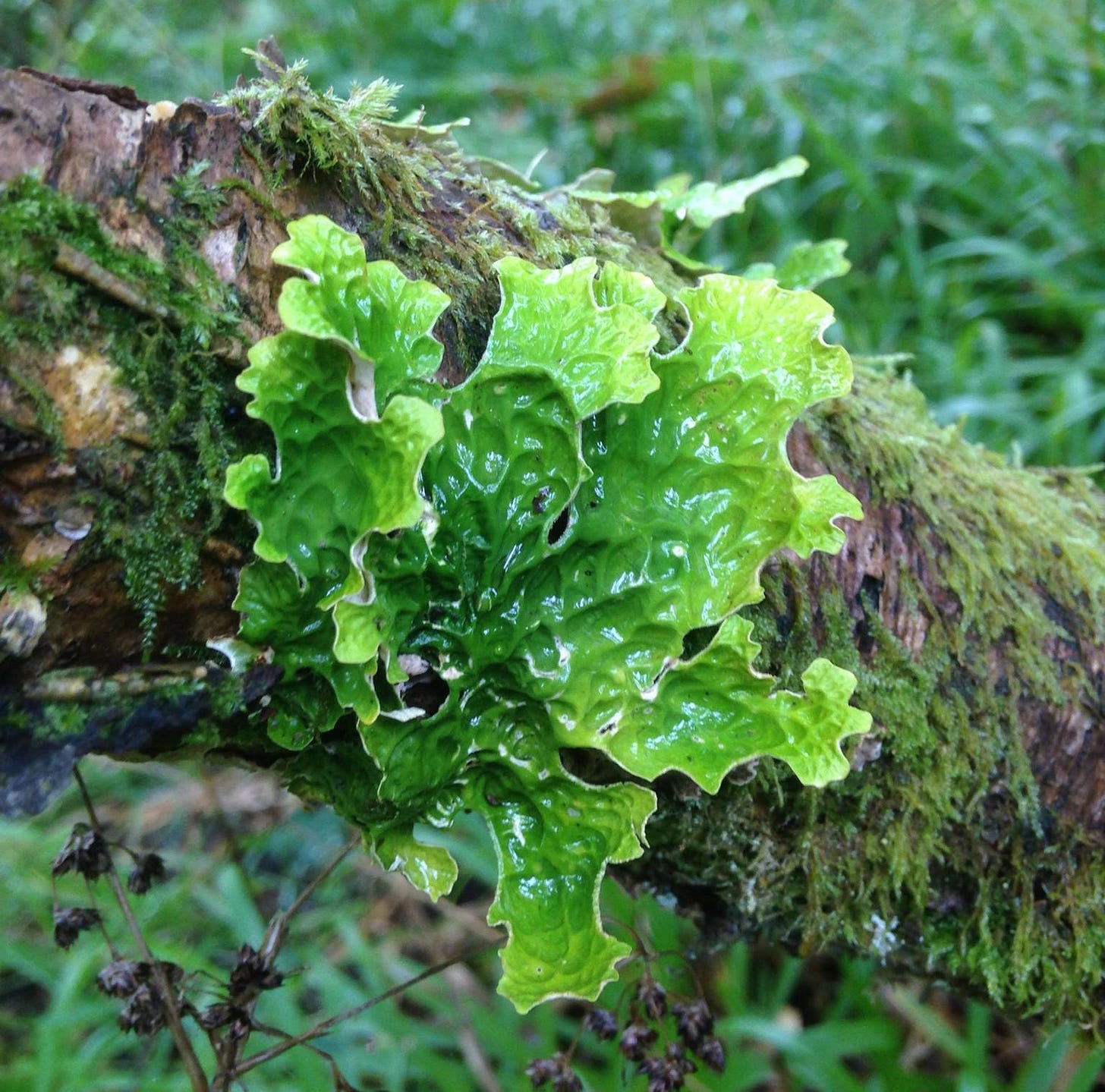Lichen to Dye For: Part 2
Let's get to know some lichens you can use for dye with Marcia O'Hara
If you’ve read my previous post about the use of Lichen’s in dyeing wool welcome back. In not you can catch up with it here:
I hope by now you’ll have been on a couple of wintery walks and spotted some of these unassuming creatures on trees and on the ground already. If not, I would recommend a walk in the woods to look out for the following species.
Hypogymnia physodes
This species is common on trees, rocks and moorland throughout the northern temperate region. A number of species in this genus are often called tube lichen, bone lichen or pillow lichen. The latter being my preferred name as it looks a lot puffier than other lichens. The way I was told to remember it is that it was a hypogymnia because it looked like it had been going to the gym, which is something we’re all thinking about more at this time of year!
There are a few different species of Hypogymnia in Scotland, however this is the most common and widespread so it’s one you’re the most likely to come across. Look to collect it particularly on fallen trees or branches.
In order to dye with it you need to collect a similar bulk to the amount of wool you want to dye, and with this species you need to dye the wool with the lichen still in the dye bath. So make sure to put it in a mesh bag before boiling in order to prevent getting bits of lichen all over your wool! You should get a yellow colour from tlichen.
Usnea subfloridana
This species is often called old man’s beard as it tends to grow as mini leafless shrubs or tassels on trees and is anchored at a singular point. This is the best way to distinguish it from other species as it’s attached to the surface at just one point and is round instead of flat. It often has a slight springiness to it as well if you pull the “branches”.
Again there are a number of different species in the genus Usnea, however this is the most common. This species does not need to be in contact with the wool when dyeing as Hypogymnia physodes does, so you can discard it after boiling, or even dry it out again and use it in other winter crafts. I would recommend boiling most natural dye items for at least an hour before it is ready for the wool, but leaving for longer can also give deeper colours. You will also get a yellow colour from this lichen.
Lobaria Pulmonaria
This is a very large conspicuous green lichen that, like the other two, grows on trees and can be easily collected from the ground and fallen branches. This species is less common as it relies on undisturbed woodlands with good air quality, making it a species particularly indicative of our temperate rainforests on the West Coast of Scotland.
However if you live on the east coast of the Highlands there are a number of places you can find it where there are steep gullies that remain damp and undisturbed, Big Burn in Golspie is a good example of the kind of places you can find it.
Historically this species was given the common name Lungwort due to it’s resemblance to human lungs, and it was frequently used to treat respiratory conditions.
Unlike the previous species Lobaria pulmonaria is listed as endangered in Scotland, so please only collect it from the ground and sparingly. This species will produce a brown dye and again it does not need to be in contact with the wool.
Reds and Purples?
If you’re looking for more vibrant colours of red and purple you can try steeping Usnea subfloridana and Evernia Prunastri in ammonia for a few weeks and then dyeing your wool with this liquid. Pleas make sure you do this in a well ventilated area, preferably outside! Believe me your living companions will not appreciate the smell. Also make sure to use separate pots for cooking and your experimental dyeing as some natural materials can be toxic if ingested!
If you catch the dye bug and are interested in more natural dyes the fantastic book The Wild Dyer: A guide to natural dyes and the art of patchwork and stitch by Abigail Booth is available to borrow from our High Life Highland Libraries.
If you’ve caught the Lichen bug check out the British Lichen Society Website and look out for my Lichen Safari events on our events page. This short video we made three years ago gives a flavour of what to expect from one of our Lichen events.
Marcia O'Hara is High Life Highland's dedicated Countryside Ranger for Easter Ross and South East Sutherland. She infuses her love for nature into every aspect of her work, from community clean-ups to guided events and workshops. With an academic foundation in Environmental Biology, Marcia excels in bringing fresh perspectives to her sessions, making science come alive in community learning. Known for her ability to engage and inspire, Marcia has a special interest in woodland botanics, including fungi, lichen, and trees. Her unique approach and deep connection to nature have made her an invaluable asset in preserving the natural beauty of the region she covers.








We loved Marcia's lichen safari - do give it a try! I feel I need to improve my knitting before graudating to dyeing, but this is all inspiring stuff, so thanks.
I didn’t know you can use lichen as dye. There are so many different species of lichen here, I might give this a try!